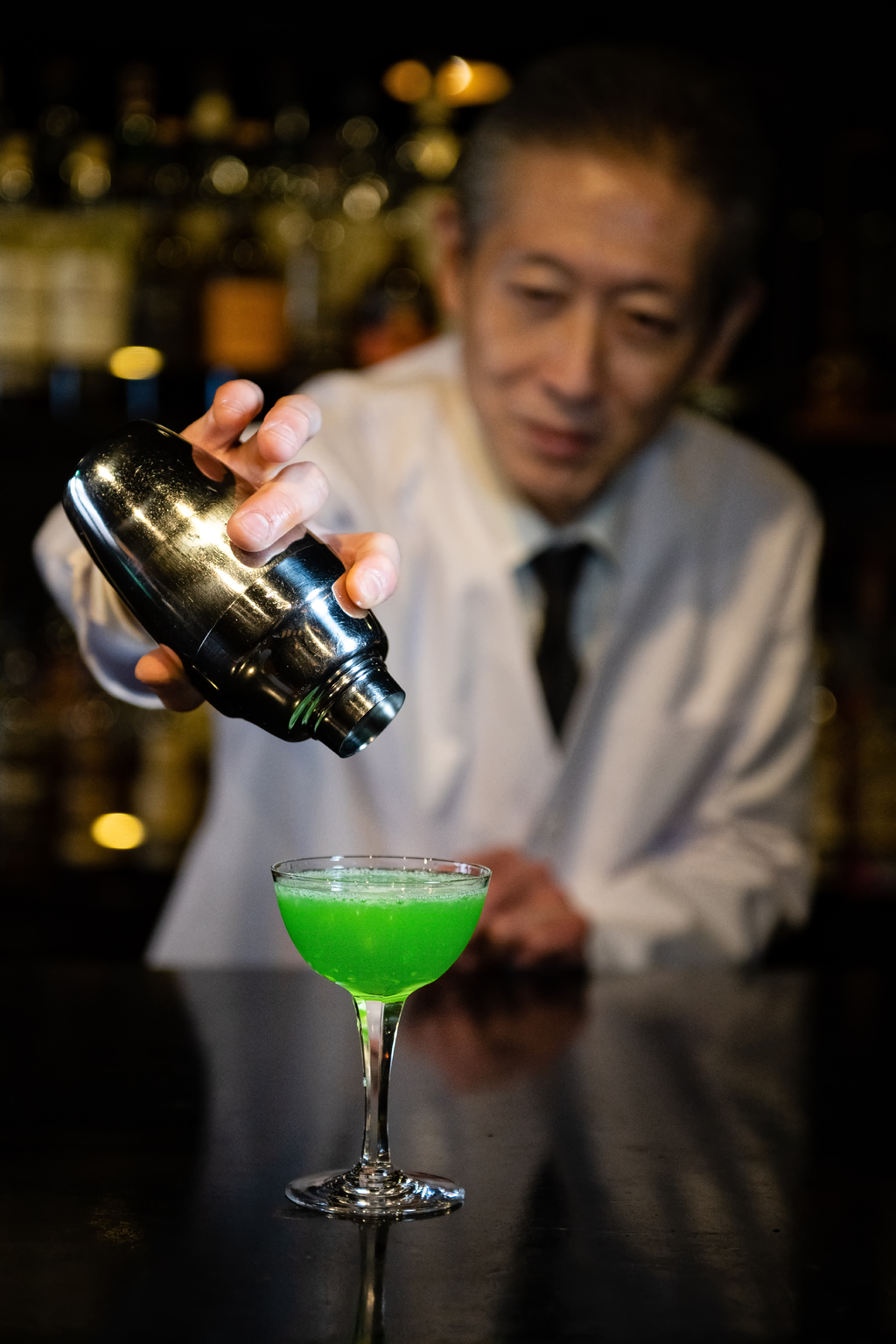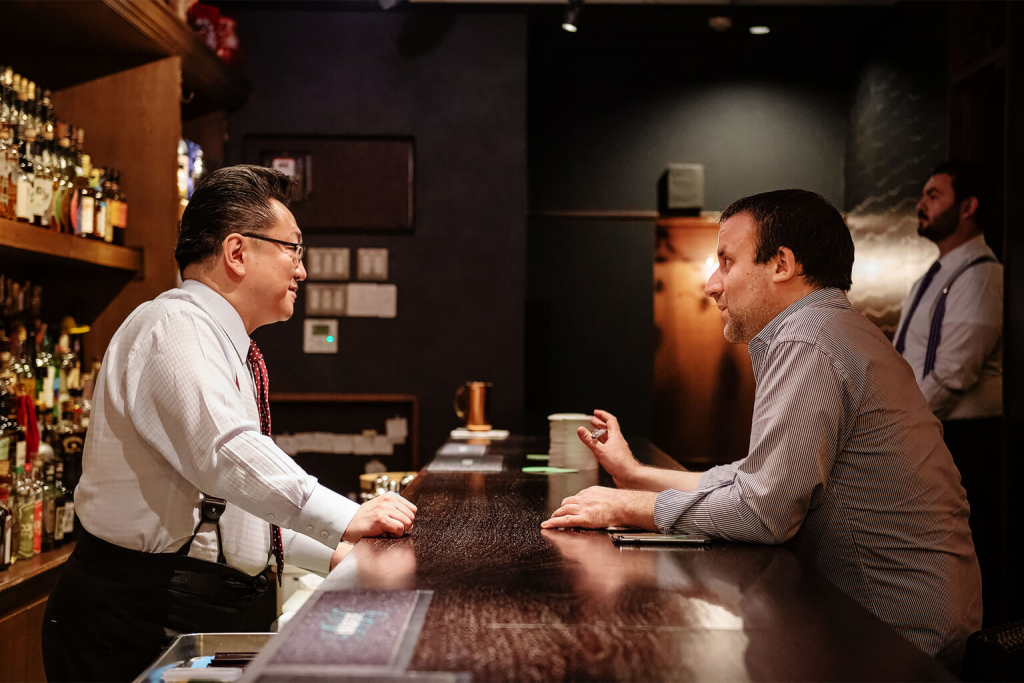I first met writer Nicholas Coldicott when we both contributed to The Japan Times more than a decade ago. While I was a naive and eager fashion journalist Nick had already established himself as a brilliant and witty drinks columnist. His double bill of articles, in 2009, about drinking his way up and down Shibuya’s infamous Center Gai are some of my favorite pieces of journalism about Tokyo. Since his stint at The Japan Times, Coldicott has gone on to work as editor of Whisky Magazine Japan and Eat magazine. He’s also been a judge for the World Whisky Awards and a writer of guidebooks for Wallpaper* and Time Out.
Coldicott, tall, charming and still brilliantly witty, is a great drinking companion and although it’s a cliché, he really has an encyclopedic knowledge of alcohol. His first book Tokyo Cocktails: An Elegant Collection of Over 100 Recipes Inspired by the Eastern Capital was released last year and it’s clear that it was a real labor of love. Over the last few years Coldicott has metaphorically owned the night and rampaged through Tokyo’s massive and still burgeoning cocktail bar scene. The result of his nocturnal adventures is astounding and the history, list of some of the world’s best cocktail bars, trade secrets, recipes and respect for bartenders and their tradecraft comes through in this thoroughly enjoyable romp of a publication.

Photo by Marika Rinno
“I’ve long thought that Tokyo has the greatest drinking scene in the world, and some of what makes it great is obvious, but some isn’t,” says Coldicott. “I’ve read articles that call the classic Japanese cocktail world a time capsule, like New York’s scene from the 1920s frozen in time, but I don’t think that’s remotely true. It’s just evolved in a particular direction peculiar to Japan, just as cocktail scenes in Singapore, New York, Paris and London all evolved in ways unique to those places.”
What differentiates Tokyo’s bartenders and cocktail bars from other global institutions? Coldicott mentions showmanship, theater, artisanship and respect. The manner in which bartenders move, shake and bring bottles to the table are all crucial aspects of the job and Tokyo does it better than most cities in the world. Tokyo Cocktails is a fascinating book, even for those not caught up in the cocktail scene. Coldicott’s interviews with industry superstars including Ginza Tender’s Kazuo Uyeda, Takao Mori of Ginza’s Mori Bar and Hisashi Kishi of the legendary Star Bar Ginza, the detailed recipes and history involved in the Tokyo drinks scene make this book indispensable for boozers everywhere.
“I’m proudest of the history chapter in that book because it involved a crazy amount of research, partly because there’s so much misinformation out there,” says Coldicott. “I thought it’s an interesting time to write a book about Japanese cocktails because there’s a definite schism now. You can get excellent cocktails that are made in batches and poured straight from a jar. And you can get cocktails by someone who thinks it’s wrong to squeeze the juice in advance. I expect both ways to survive in Tokyo.”

Indeed, the history chapter is fascinating especially when Coldicott reveals that it was a great-nephew of Jane Austen who first introduced cocktails to Japan. “I knew there was a hotel manager called Purvis who established the first cocktail bar in Japan, but I didn’t know he was a great-nephew of Jane Austen. But I found his name in an old book related to Austen and spent hours one night with genealogy charts trying to triple check it… which isn’t what I imagined would be part of the job.”
There’s something romantic about Tokyo Cocktails, the history, culture and geekiness involved in its production. Coldicott, I think, would admit to being a geek, an alcohol nerd. The otaku elements, however, in no way detract from the beautiful prose and admiration and respect he has for the people and personalities that make up Tokyo’s pulsating drinks industry.
One example of the true monozukuri or craftsmanship involved is the creation of ice for cocktails. “I knew ice was high quality here and made in factories, but I didn’t know how incredible the process is,” adds the Englishman. “Spending 72 hours making a giant pillar of perfect ice that will be hacked up and delivered to the bars and restaurants. They could certainly make 48-hour ice that’s pretty pure, but they don’t. It has to be as close to perfect as possible.”

Coldicott’s writing evokes nostalgia and when not going into the details about producing craft gin or his undying love of his favorite tipple, the Sidecar, he interweaves literary references and commentary throughout this hefty 367-page book. “Uyeda wrote in his book Cocktail Techniques that ‘cocktails represented a bottomless well of dreams and romance.’ Sip a Jack Rose and you’re Jake Barnes at the Crillon Hotel in (Ernest) Hemingway’s The Sun Also Rises, far from the grinding reality of Tokyo office work and long commutes on crowded trains.”
One of the standout sections of Tokyo Cocktails is focused on the glories and delights inherent in daytime drinking. As a boozing Glaswegian I found this chapter especially noteworthy. Unbeknown to many Tokyo residents who usually wait patiently until izakaya open at 5pm, there are several bars open in the morning or afternoon to satiate your thirst for a cheeky wee daytime dram. Old-school journalists, moms who are waiting to pick up kids from kindergarten and jaded salarymen are all noted, perhaps unsurprisingly, as typical offenders of enjoying a daytime tipple.
What Tokyo Cocktails becomes, then, is a prism through which Coldicott invites us to explore and look at Tokyo as a diverse entity, a city where the creation of alcohol and globally-recognized bars has become an artform. Drinking is serious business in Japan and for a real insight into this enigmatic world Tokyo Cocktails is an essential publication for those wishing to investigate drinking culture, the magic of cocktails and the history, people and personalities behind it all.
Buy Tokyo Cocktails here.









